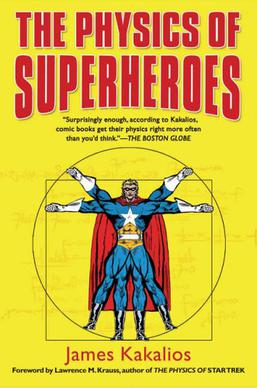
Spider-Man is a superhero appearing in American comic books published by Marvel Comics. Created by writer-editor Stan Lee and artist Steve Ditko, he first appeared in the anthology comic book Amazing Fantasy #15 in the Silver Age of Comic Books. He has been featured in comic books, television shows, films, video games, novels, and plays.

The Silver Age of Comic Books was a period of artistic advancement and widespread commercial success in mainstream American comic books, predominantly those featuring the superhero archetype. Following the Golden Age of Comic Books and an interregnum in the early to mid-1950s, the Silver Age is considered to cover the period from 1956 to 1970, and was succeeded by the Bronze Age.

Gwendolyne Maxine Stacy is a fictional character appearing in American comic books published by Marvel Comics, usually as a supporting character in those featuring Spider-Man. A college student and the daughter of George Stacy and Helen Stacy, she was the first romantic interest for Peter Parker following his high school graduation before she was murdered by the Green Goblin. Her death has haunted Peter ever since, and stories published long afterwards indicate she still holds a special place in his heart.

A superhero film is a film that focuses on the actions of superheroes. Superheroes are individuals who possess superhuman abilities and are dedicated to protecting the public. These films typically feature action, adventure, fantasy, or science fiction elements. The first film about a particular character often focuses on the hero's origin story. The first film also frequently introduces the hero's nemesis.

George Stacy is a fictional character appearing in American comic books published by Marvel Comics, usually in stories depicting the superhero Spider-Man. He is Gwen Stacy's father and the police captain from the New York City Police Department. Stacy is a strong supporter of Spider-Man, often defending the superhero when others accuse Spider-Man of criminal acts, and thus serves as a foil personality to another Spider-Man related character, J. Jonah Jameson. Stacy's death in The Amazing Spider-Man #90 has been described as a turning point in the Spider-Man saga, signaling to readers that permanent changes could happen in the story, and that the supporting cast was not safe.

Jessica Campbell Jones Cage is a superheroine appearing in American comic books published by Marvel Comics. The character was created by writer Brian Michael Bendis and artist Michael Gaydos and first appeared in Alias #1, as part of Marvel's Max, an imprint for more mature content, and was later retroactively established to have first appeared in Amazing Spider-Man #4 in the Silver Age of Comic Books as an originally unnamed classmate of Peter Parker, created by writer-editor Stan Lee and artist Steve Ditko. Within the context of Marvel's shared universe, Jones is a former superhero who becomes the owner of Alias Private Investigations. Bendis envisioned the series as centered on Jessica Drew and only decided to create Jones once he realized that the main character had a distinct voice and background that differentiated her from Drew.

"The Night Gwen Stacy Died", alternatively known as "The Green Goblin's Last Stand", is a story arc of the Marvel Comics comic book series The Amazing Spider-Man #121–122. The two-issue story was written by Gerry Conway, with pencil art by Gil Kane and inking by John Romita Sr. and Tony Mortellaro.

In entertainment, an origin story is an account or backstory revealing how a character or group of people become a protagonist or antagonist, and it adds to the overall interest and complexity of a narrative, often giving reasons for their intentions.

The Spectacular Spider-Man is an American superhero animated television series based on the Marvel Comics character Spider-Man, created and developed by Greg Weisman and Victor Cook. In terms of overall tone and style, the series is based principally on the Stan Lee, Steve Ditko and John Romita Sr. era of The Amazing Spider-Man comic books, with a similar balance of action, drama and comedy as well as a high school setting. However, it also tends to blend material from all eras of the comic's run up to that point in addition to other sources such as the Ultimate Spider-Man comics by Brian Michael Bendis and Mark Bagley, as well as Sam Raimi's Spider-Man film series.

The Green Goblin's Last Stand is a 1992 superhero fan film by Dan Poole, based on the comic book story "The Night Gwen Stacy Died", published by Marvel Comics in The Amazing Spider-Man #121–122. Poole is the director, producer, creative editor, screenwriter, and star of the film. The film and its attendant documentary received showings and accolades at several small film festivals.

The Physics of Superheroes is a popular science book by physics professor and long-time comic-book fan James Kakalios. First published in 2005, it explores the basic laws of physics. Kakalios does not set out to show where the world of superheroes contradicts modern science, granting the heroes one or more "miracle exceptions" from natural law. Instead, he focuses on examples of comic book scenes that can be used to understand the diverse laws of physics from an unusual angle, such as Gwen Stacy's death and Ant-Man's ability to punch his way out of a paper bag. Kakalios relates these elements of comic books to principles of physics, such as levers and torque, and in this way covers diverse topics, from mechanics to the quantum world.

A superpower is a special or extraordinary superhuman ability that is greater than what is considered normal. Superpowers are typically displayed in science fiction and fantasy comic books, television programs, video games, and films as the key attribute of a superhero. The concept originated in American comic books and pulp magazines of the 1930s and 1940s, and has gradually worked its way into other genres and media.

Superhero fiction is a genre of speculative fiction examining the adventures, personalities and ethics of costumed crime fighters known as superheroes, who often possess superhuman powers and battle similarly powered criminals known as supervillains. The genre primarily falls between hard fantasy and soft science fiction spectrum of scientific realism. It is most commonly associated with American comic books, though it has expanded into other media through adaptations and original works.

Ultimate Comics: Spider-Man was a monthly comic book series published by Marvel Comics that debuted in September 2011 as part of the second re-launch of the Ultimate Marvel imprint. It followed the "Death of Spider-Man" storyline that concluded the series Ultimate Spider-Man, to which Ultimate Comics: Spider-Man served as a sequel. Written by Brian Michael Bendis and illustrated by Sara Pichelli, the series also served as a continuation of elements from the miniseries Ultimate Comics: Fallout and focuses on the all-new Spider-Man, Miles Morales. The series was set in a continuity shared with other relaunched Ultimate Marvel titles including Ultimate Comics: X-Men and Ultimate Comics: Ultimates. The title ended in October 2013; the adventures of Miles continue in Miles Morales: Ultimate Spider-Man, released in July 2014.

The Amazing Spider-Man is a 2012 American superhero film based on the Marvel Comics character Spider-Man and sharing the title of the character's longest-running comic book series. It is the fourth theatrical Spider-Man film produced by Columbia Pictures and Marvel Entertainment, serving as a reboot of the series following Sam Raimi's 2002–2007 Spider-Man trilogy, and the first of the two The Amazing Spider-Man films. The film was directed by Marc Webb and written by James Vanderbilt, Alvin Sargent and Steve Kloves from a story by Vanderbilt, and stars Andrew Garfield as Peter Parker / Spider-Man alongside Emma Stone, Rhys Ifans, Denis Leary, Campbell Scott, Irrfan Khan, Martin Sheen, and Sally Field. In the film, after Parker is bitten by a genetically altered spider, he gains newfound, spider-like powers and ventures out to save the city from the machinations of the Lizard.
The comic book stories published by Marvel Comics since the 1940s have featured several noteworthy concepts besides its fictional characters, such as unique places and artifacts. Since the introduction of Peter Parker as a character in 1962, with the superhero alter-ego, Spider-Man, a number of these locations have been prominently featured in connection with storylines specific to this character. These have then been carried over to depictions of Spider-Man in film, video games, and other media. There follows a list of those features.

Ghost-Spider, formerly Spider-Woman, is a superhero appearing in American comic books published by Marvel Comics. She was created by Jason Latour and Robbi Rodriguez. The character debuted in Edge of Spider-Verse issue #2 as part of the 2014–15 "Spider-Verse" comic book storyline, leading to the ongoing series Spider-Gwen that began in 2015.
Spider-Man Versus Kraven the Hunter is a 1974 American superhero short film written and directed by Bruce Cardozo. It is a fan film that was endorsed by Marvel Comics and authorized by Stan Lee.

Gwendolyne Maxine Stacy is a fictional character in Marc Webb's Amazing Spider-Man films, based on the Marvel Comics character of the same name created by Stan Lee and Steve Ditko. She was portrayed by Emma Stone in the films The Amazing Spider-Man and The Amazing Spider-Man 2. As opposed to taking a supporting role in the previous film trilogy, Gwen is given a prominent role in Webb's films as one of Peter Parker's classmates, serving as his primary love interest and a foil to his character. Webb based Gwen's character off of her traditional comic-book portrayal. For her performance in the films, Stone has received critical praise and wider recognition, despite the divided response to the film series as a whole.

The Kingpin is a supervillain appearing in American comic books published by Marvel Comics. He was created by Jason Latour and Robbi Rodriguez. The character debuted in Edge of Spider-Verse issue #2 as part of the 2014–15 "Spider-Verse" comic book storyline as the archenemy of Gwen Stacy / Spider-Woman, continuing into the ongoing series Spider-Gwen that began in 2015. The "Kingpin" name is a reference to the crime lord title in Mafia slang nomenclature.


















